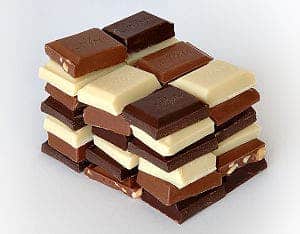I love chocolate, and to be frank, I don’t really care if it goes directly to my hips or not, but millions of women and men all across the world believe differently. For them this study is godsend.

The body mass index or BMI is calculated by taking a person’s weight and dividing it by their height times two. The normal BMI is somewhere between 18.5 to 24.9, anything lower than that is considered underweight, and anything higher than that is considered overweight.
“Adults who consumed chocolate more frequently had a lower BMI than those who consumed chocolate less often,” said the study led by Beatrice Golomb and colleagues at the University of California San Diego. “Our findings — that more frequent chocolate intake is linked to lower BMI — are intriguing,” she added, calling for more detailed research and perhaps a randomized clinical trial of chocolate’s metabolic benefits.
However, experts urge for moderation, especially before establishing a well-understood pattern.
“Before you start eating a chocolate bar a day to keep the doctor away, remember that a chocolate bar can contain over 200 calories which mostly come from saturated fats and sugar,” said Nancy Copperman, director of Public Health Initiatives at the North Shore-Long Island Jewish Health System in New York. “Consider limiting your chocolate fix to a one ounce (28 grams) portion of dark chocolate or adding cocoa powder which is very low in fat to your food once a day,” said Copperman, who was not involved in the study.






